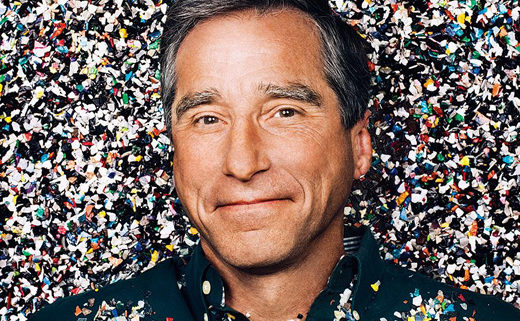How does MBA transform plastic waste into valuable raw materials?
‘Freeing the world from having to make new plastic. Forever’. These were the words used by Popular Science, the US-based green technology and science publication, to describe the potential of MBA Polymers’ sustainable polymer technology. The magazine interviewed MBA’s founder, Mike Biddle, in April 2014 about his mission to eliminate plastic waste and harness the value of ‘above ground mines’. Mike explains MBA’s story and highlights how our technology stands to revolutionise the way society tackles waste plastics, while creating high quality, lower carbon recycled plastic for use in manufacturing.
So how does MBA separate plastic polymers from complex waste streams?
While the exact processes are confidential, we can give you an overview of some of the different techniques used in plastic polymer separation and how we create five high grade plastics for use in manufacturing: ABS, HIPS, HDPE, PP and Filled PP.
Firstly, we receive waste plastic material for processing from our JV partners in the UK, Austria and China. This is largely automotive shredder residue (ASR), electronic waste and municipal plastic waste. We eliminate any non-plastics, grind the waste into tiny pieces, and ensure that the material we’re processing is scrupulously clean. We can then begin separating the plastics by type. And this is no mean feat.
While metals can be easily separated based on their colour, density and electrical and magnetic properties, plastics have overlapping densities and nearly identical electrical and magnetic properties. And any type of plastic can be any colour. Similarly, some plastics are flame retardant, some are reinforced and many are covered in coatings and dyes. All of this combines to make plastic polymers challenging to separate.
Speaking to Popular Science, Biddle said: “It’s hard to do. That’s why no-one else is doing it. No-one is processing this to the extent we are.”

MBA has adapted separation techniques from industries including mining, metal recycling and food processing, as well as inventing its own techniques. We have 60 patents already registered, and more in the pipeline.
Broadly speaking, multiple separate procedures isolate the five target plastics. Each then goes to a stainless steel silo for blending, before being melted and extruded into spaghetti-like strands. These are sliced into mustard seed-sized pellets – this is the product that we sell to our customers.
Here are some plastics recycling techniques available to plastics recyclers, as covered by Popular Science:
- Removing ferrous metals – an overhead magnet belt consisting of a strong magnet with a conveyor belt moving around it, plucks ferrous metals from the stream of cleaned, ground, incoming waste and drops them into a separate chute.
- Removing non-ferrous metals – an electro-magnet inside a rotating drum creates a force field at the end of a conveyor belt. Non-ferrous items, like aluminium and copper, jump off the belt and into a chute, repelled by the magnetic field.
- Sorting materials by weight – Mixed material moves onto an inclined grading deck. A fan blows pressurised air across the deck’s surface and lifts the lighter items. The vibrating deck sends heavier and lighter items to different sides of the incline.
- Sorting by chemistry – A polymer-specific surfactant is added to a mix of plastic fragments, and the slurry is placed in an aerated bath. Air bubbles attach to the target plastic and float away from the other materials.
- Sorting by colour – Bits of plastic pour past a photoelectric detector, which identifies those of a particular colour. The detector communicates with an air gun, which blasts any particles of a different colour with air, knocking them out of the waste stream.
To read the whole Popular Science article, please click here.

